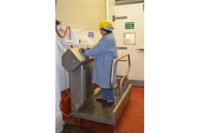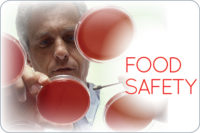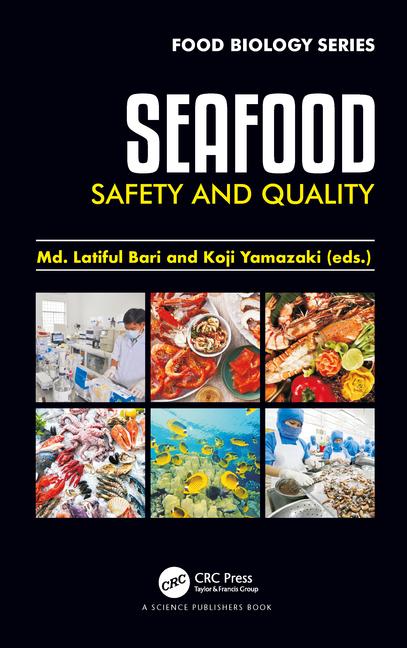Preventing Food-Borne Illness
All links in the food chain must join forces to ensure the production of safer products.
Meat and poultry packers/processors have plenty of challenges facing them each work day, but none are as lofty as maintaining and enhancing food safety. When it comes to combating food-borne illness, industry continuously mounts a full-court press. It can’t afford not to.
An estimated 76 million cases of food-borne disease occur every year in the United States, relays the Centers for Disease Control and Prevention (CDC). Although most of these cases are mild and cause symptoms for only a day or two, some cases are more serious. CDC estimates that there are 325,000 hospitalizations and 5,000 deaths related to food-borne diseases every year. The most severe cases appear to occur in the very old, the very young, the immuno-compromised, and in healthy people who are exposed to a very high dose of an organism.
Many different disease-causing microbes, or pathogens, can contaminate foods. As a result, there are many different food-borne infections. CDC further relays that poisonous chemicals or other harmful substances can cause food-borne diseases if present in food.
Industry has its hands full when it comes to battling food-borne diseases; more than 250 have been identified.
“Most of these diseases are infections, caused by a variety of bacteria, viruses, and parasites that can be food-borne,” relays information on CDC’s Web site www.cdc.gov
Most common food-borne infections
Read any industry trade publication throughout the year and you’re bound to find numerous reports on food-borne infections. But which are the most common? Read on:
Campylobacter — CDC relays this is the most commonly identified bacterial cause of diarrheal illness in the world. These bacteria reside in the intestines of healthy birds, and most raw poultry meat has Campylobacter on it. The most frequent source of this infection comes from eating undercooked chicken or other food that has been contaminated with juices dripping from raw chicken.
Salmonella — Widespread in the intestines of birds, reptiles, and mammals, it can spread to humans through a variety of foods of animal origin. It causes salmonellosis, and typically results in fever, diarrhea, and abdominal cramps. It can invade the bloodstream and cause life-threatening infections within people who have poor underlying health or weakened immune systems.
E. coli O157:H7 — This bacterial pathogen has a reservoir in cattle and other similar animals, CDC relays. Once food or water contaminated with microscopic amounts of cow feces is consumed, human illness typically follows. It oftentimes results in a severe and bloody diarrhea and painful abdominal cramps, but usually doesn’t include much of a fever.
In addition to disease caused by direct infection, CDC points out that some food-borne diseases are caused by the presence of a toxin in the food that was produced by a microbe in the food. The bacterium Staphylococcus, for example, can grow in some foods and produce a toxin that causes violent vomiting. And the rare but deadly disease botulism occurs when the bacterium Clostridium botulinum grows and produces a powerful paralytic toxin in foods. These toxins can produce illness even if the microbes that produced them are no longer there.
What’s equally disturbing is the spectrum of food-borne diseases is constantly changing. And in the last 15 years, several important diseases of unknown cause have turned out to be complications of food-borne infections. It’s now known, for example, that the Guillan-Barre syndrome can be caused by Campylobacter infection, and that the most common cause of acute kidney failure in children, hemolytic uremic syndrome, is caused by infection with E. coli O157:H7 and related bacteria. In the future, other diseases whose origins are currently unknown may very well turn out to be related to food-borne infections, CDC warns.
Unfortunately for the meat and poultry industries, raw foods of animal origin are most likely to be contaminated, which includes meat, poultry, raw eggs, unpasteurized milk, and raw shellfish. Foods that mix and consist of the products of many individual animals, such as ground beef, are particularly hazardous because a pathogen present in any one of the animals may contaminate an entire batch. One single hamburger may contain meat from hundreds of animals, but ground products aren’t the only category subject to potential food-safety hazards. A broiler chicken carcass, for instance, can be exposed to drippings and juices of many thousands of other birds that went through the same cold-water tank following slaughter.
Addressing unsolved problems
Looking to the future, industry will likely face new food-borne disease problems. Before any such problem can be solved, it requires careful observation and research to find answers.
CDC lists the following questions that require answers:
How do the food-borne pathogens spread among the animals themselves, and how can this be prevented?
What is the microbial cause of outbreaks in which no pathogen can be identified by current methods? This is true for more than half of the reported food-borne outbreaks, CDC relays. Will wider application of existing experimental diagnostic methods help, or are these outbreaks caused by pathogens that we do not know how to identify?
What would be the impact of basic food safety education of restaurant workers on the risk of food-borne diseases among restaurant patrons?
How can the food and water that animals consume be made safer?
How can animal manure be disposed of usefully — but without threatening the food supply and the environment?
How can basic food safety principles be most effectively taught to school children?
How can we be sure that food-safety standards in other countries are as good as those in the United States?
What control strategies in the slaughter plant will reduce the contamination of poultry meat with Campylobacter?
How can irradiation pasteurization, which has suffered a setback in recent years, of certain high-risk foods (such as ground beef) be used most effectively?
The best way to address any food-safety challenge is through a “team” approach. Such challenges can be best addressed if the meat, poultry, and allied industries; government, academia; and the scientific communities join forces and share information on their findings.
Food safety is everyone’s business. More research is being conducted on farms and ranches to determine how best to ensure live animals are cleaner before they enter slaughter facilities. Food processing plants and retail outlets serving food on-premise, and foodservice establishments are doing more to educate their employees about personal hygiene and safe-food handling. Equally important, more of an effort is being placed on educating consumers on how best to handle, prepare, and store their foods.
As these efforts increase and technologies evolve, everyone will benefit – particularly consumers. NP





Report Abusive Comment